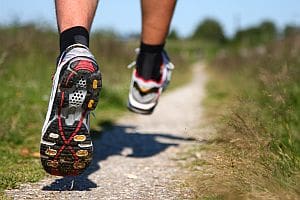statFor some women, it's about making an elegantement at special events or being a couple…

Want to Upgrade Your Running Routine? Try Cross-Country
 For many running enthusiasts, it is essential to keep improving the workout technique and to keep things interesting. One way of doing this is it to try out different surfaces such as the treadmill, the street, and the track. However, new information is coming to light about the best way to upgrade your running routine: running cross-country on a trail. Why is trail running so beneficial for runners?
For many running enthusiasts, it is essential to keep improving the workout technique and to keep things interesting. One way of doing this is it to try out different surfaces such as the treadmill, the street, and the track. However, new information is coming to light about the best way to upgrade your running routine: running cross-country on a trail. Why is trail running so beneficial for runners?
- Running on trails is better for your body. A trail’s surface is much more forgiving on your joints—the stress of impact is significantly mitigated, making the trail a better place to run, physiologically speaking. Many runners suffer from knee pain, shin splints, ITB syndrome, or other injuries caused by running on a hard surface that puts a lot of pressure on the joints. For these people, trail running can be a life-changer. Trail running is also purported to help prevent most forms of tendonitis (unless you suffer from Achilles tendonitis, in which case, running on a harder surface may actually be better for you).
- Trail running works more muscles than hard-surface running does. Trail running involves literally watching your step—roots, rocks, and other small obstructions will compel trail runners to jump, hop, and move around the trail while staying balanced, which uses a wider range of muscles than one would use on, say, a treadmill. In addition, because the trail is softer than paved surfaces, your step depresses a bit each time your foot hits the grounds, requiring you to lift your leg and use more muscle each time you take a stride.
- Trail running requires intense focus. Trail runners not only get a full-body workout, but they also use their powers of concentration much more than treadmill runners. Trail runners find this type of mental workout exhilarating and energizing—and it may even help improve your concentration and memory on a day-to-day basis.
- Running in a natural setting is beneficial to your mental health. According to TheClymb.com, “An article published by Harvard Medical School states this: ‘Researchers at the University of Essex in England are advancing the notion that exercising in the presence of nature has added benefit, particularly for mental health. Their investigations into “green exercise,” as they are calling it, dovetails with research showing benefits from living in proximity to green, open spaces. In 2010 the English scientists reported results from a meta-analysis of their own studies that showed just five minutes of green exercise resulted in improvements in self-esteem and mood.’ ”
For trail running beginners, it is important to follow some basic tips, such as:
- Obtaining the right kind of running shoes for trail running. Use the shoes you feel the most comfortable in. Do a little research if you don’t know exactly what you need.
- Bringing water. You won’t be finding any drinking fountains out in the woods, so plan ahead and stay hydrated.
- Giving yourself plenty of time to complete your run. Don’t push too hard in the beginning—that’s an easy way to burn yourself out on what could be a beloved and effective full-body workout.
- Maintaining focus. It is essential that you pay close attention to the trail. Remember—you’re not on a smooth treadmill or a predictable, engineered running surface; you’re in the middle of the woods on a trail with rocks and roots. If you lose focus, you may end up inuring yourself, and you truly do not want to be out in the middle of nowhere with a twisted or broken ankle. If you feel like your concentration is beginning to wane, slow down or take a break until you get your focus back.




